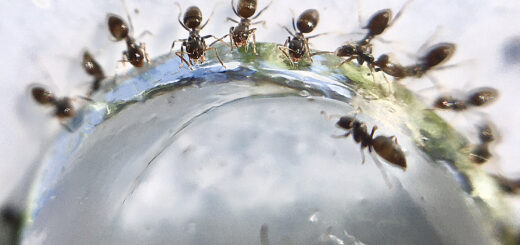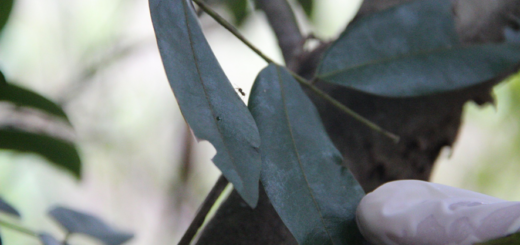Competition for food and nesting resources in arboreal ant communities of Papua New Guinea

A Photoblog contribution by Phil Hoenle. All pictures © by Phil Hoenle.


Edit by Florian Steiner and Salvatore Brunetti
In this photoblog contribution, Phil Hoenle shares some amazing pictures taken during his field work in Papua New Guinea. Enjoy!
MNB: Could you briefly outline the research you published in the journal Myrmecological News in layperson’s terms?
PH: We wanted to understand how competition among ants for food and nesting resources changes at different elevations. To explore this, we studied tropical tree-dwelling ants in Papua New Guinea at two locations, one in the lowlands (around 200 m elevation) and one in the mid-elevations (around 900 m). Particular intriguing is that while usually ant diversity declines with elevation, we chose these sites because previous research had shown that the mid-elevation site has many more coexisting ant species than the lowland site. We wondered: Would this increase interspecific ant competition?
To test for differences in competition, we placed two types of resources in the trees: small bamboo cavities for nesting and food baits made of tuna and sweet cordial. By placing them in standardized grids in the plots, we could simply look at how often they were occupied by ants or not. If more ants occupied the resources, it suggested a stronger competition.
Surprisingly, despite having more ant species, competition for both nesting resources and bamboo nests was much lower at mid-elevations than in the lowlands. Forest structure was quite similar in the two elevations, and we hypothesized that temperature is the main environmental factor at play. We found that the roughly four degrees decline in temperature lead ants to form smaller colonies, and the aggressive species that dominate large territories become less common. Although the exact mechanisms behind this aggressivity and/or dominance decline are unclear, it could be linked, for instance, to less available honeydew and prey resources that make territorial and colony size maintenance more costly.
In fact, we didn’t expect the effect to be nearly that strong, and it interfered with another experiment that we conducted, in which we moved the occupied bamboo nests from the mid-elevations to lowland plots treated with insecticide, hoping to separate the effects of competition from climate differences. Unfortunately, this plan didn’t pan out – although the insecticide treatment worked well, unexpectedly few nests were occupied and only a single nest survived the translocation, which prevented a clear interpretation. We still present the data and our setup in the Supplementary Material and hope that our experience can inform and inspire future experiments on how elevation shapes ant competition. To our knowledge, it represents the first such attempt of nest movement among elevations in the ants
MNB: What is the take-home message of your work?
PH: Our study reveals that competition in tree-dwelling ant communities decreases from lowlands to mid-elevations, suggesting temperature as a key driver of these patterns. However, many questions are left to uncover, for instance whether this applies to ground-dwelling ants as well.















Recent Comments